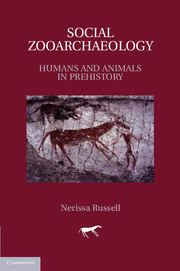Book contents
- Frontmatter
- Contents
- List of tables
- Preface
- 1 Beyond protein and calories
- 2 Animal symbols
- 3 Animals in ritual
- 4 Hunting and humanity
- 5 Extinctions
- 6 Domestication as a human–animal relationship
- 7 Pets and other human–animal relationships
- 8 Animal wealth
- 9 Meat beyond diet
- 10 Studying human–animal relations
- References
- Index
2 - Animal symbols
Published online by Cambridge University Press: 05 June 2012
- Frontmatter
- Contents
- List of tables
- Preface
- 1 Beyond protein and calories
- 2 Animal symbols
- 3 Animals in ritual
- 4 Hunting and humanity
- 5 Extinctions
- 6 Domestication as a human–animal relationship
- 7 Pets and other human–animal relationships
- 8 Animal wealth
- 9 Meat beyond diet
- 10 Studying human–animal relations
- References
- Index
Summary
Humans use animals in order to draw elaborate pictures of themselves. (Tilley 1999:49)
I have somewhat arbitrarily divided the subject matter of this chapter from that of the next, which treats the ritual use of animals. The symbolic value of animals permeates all spheres in which they participate, but in this chapter I discuss some of the areas where animals act primarily as metaphors. The representation of animals, or animal art, is a huge topic that has received extensive treatment. I do not attempt to cover this field, but I explore it briefly to acknowledge its importance. I then address totem and taboo, classic subjects of anthropological investigation that have received less attention in zooarchaeology. Finally, I consider animal combat.
Animal metaphors
Animals are universally key metaphors. E. O. Wilson (1984, 1993) even suggests that this special interest in animals is part of our genetic heritage, a phenomenon he terms “biophilia” (see also Kellert 1993). Animals are enough like people to be powerfully evocative, yet different enough to be safely distant. We use animal categories to understand human society and human categories to understand animals: “[T]he construction of principles of metaphoric analogy between the domains of humans and the domains of animals forms a fundamental basis for self-understanding and the construction of meaning in all known societies. Animals are key source domains and target domains of metaphors through which culture is constituted” (Tilley 1999:49–50).
- Type
- Chapter
- Information
- Social ZooarchaeologyHumans and Animals in Prehistory, pp. 11 - 51Publisher: Cambridge University PressPrint publication year: 2011



